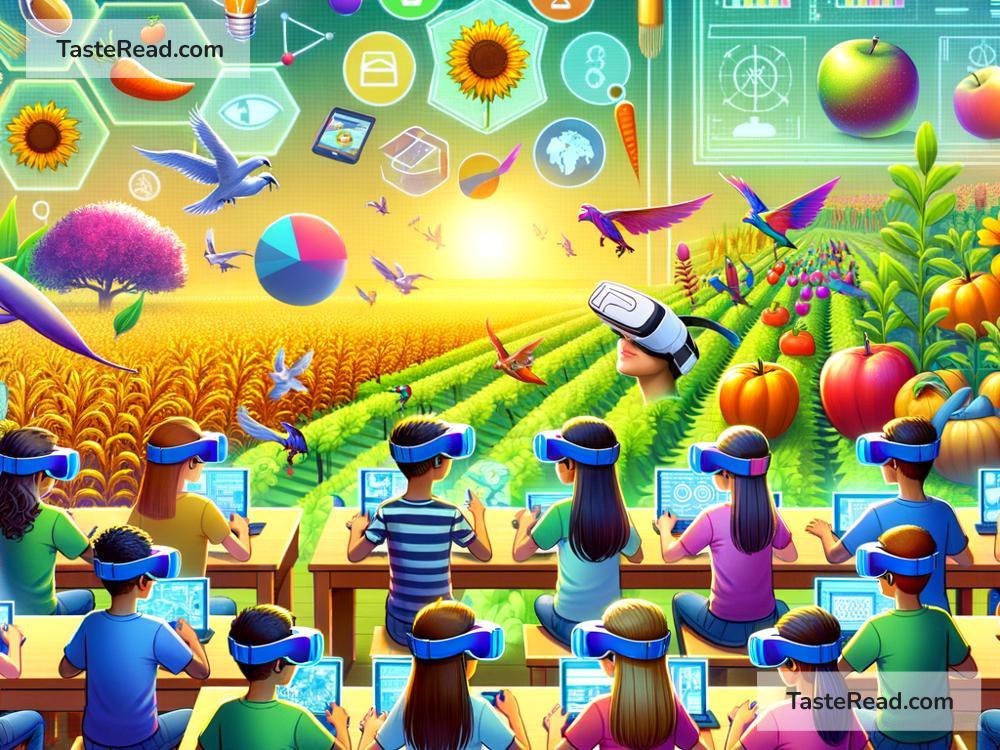The Future of Food Education: Preparing for a Healthier Tomorrow
Food is part of our everyday lives—it’s more than just fuel; it’s culture, tradition, health, and community. But do we truly understand what’s on our plate? The way food is grown, prepared, and consumed has changed drastically, and with global challenges like climate change, population growth, and health issues, food education has never been more important. The future of food education will focus on teaching people not just about nutrition, but also about sustainability, technology, and how to make mindful choices about what they eat.
This blog looks at where food education is heading and why it matters.
Why Food Education Needs a Fresh Start
For decades, most food education has focused on basic nutrition—learning about carbohydrates, proteins, fats, vitamins, and minerals. While this is important, it’s no longer enough. Today, people are facing much bigger questions when it comes to food. How can we produce enough food without harming the planet? Why are rates of obesity and diabetes rising? What’s the impact of processed food on our health? To tackle these problems, we need to think differently about food education.
This is especially true for younger generations. Kids and teenagers often grow up without understanding how food is grown or where it comes from. Many families rely on fast food or packaged meals, which are convenient but aren’t always healthy. Teaching people—young and old—about the bigger picture of food can empower them to make better choices for themselves and the world.
Food and Sustainability: Growing Awareness
In the future, food education won’t just be about nutrition—it will also focus on sustainability. How we grow food affects the environment. For example, traditional farming methods often use chemicals that harm the soil and water, while raising large amounts of livestock can lead to deforestation and higher greenhouse gas emissions. These are big problems, but there are solutions.
Food education can teach people about sustainable farming practices like organic farming, vertical farming, and regenerative agriculture. It might also highlight the benefits of eating more plant-based foods and less meat, which is already gaining popularity because of its positive impact on the planet.
People will learn to make conscious decisions about where their food comes from. For example, choosing local produce reduces the environmental cost of transporting food long distances. Food education will encourage us to think beyond our plates and consider how our meals impact the world.
Technology and Food: A New Era
Technology is playing a big role in shaping the future of food—and food education needs to keep up. For instance, lab-grown meat and plant-based proteins are becoming more common, offering new ways to reduce the environmental impact of traditional meat farming. Additionally, precision agriculture uses drones and AI to monitor crops and improve farming efficiency, reducing waste and increasing yields.
In schools, food education might incorporate virtual reality to show children where their food comes from or how it’s grown, even if they live in urban areas far from farms. Apps and digital tools could teach people how to cook, plan meals, and track their nutritional intake.
This integration of technology into food education will help people understand the possibilities of the future food system and inspire them to embrace innovations.
Food Skills: Back to Basics
In addition to lessons about sustainability and technology, food education will also focus on practical skills—like cooking! Many people, especially younger generations, lack basic cooking knowledge. This can lead to unhealthy eating habits and reliance on fast food. Knowing how to prepare your own meals doesn’t just improve your health; it also helps you connect with food in a meaningful way.
Future food education might include cooking classes in schools, community workshops, or online tutorials. These lessons could cover everything from how to make simple meals to how to use leftovers to reduce food waste. Schools might even grow their own gardens so kids can learn firsthand about fresh produce and the effort that goes into cultivating food.
Food Equity: Making Education Accessible
The future of food education must also address food equity. Today, some communities have more access to fresh, healthy foods than others. Food deserts (areas with limited access to affordable and nutritious food) and the high cost of organic or sustainable foods make healthy eating challenging for many people.
Food education can help bridge these gaps. Teaching people how to grow food at home (even in small spaces like balconies), how to shop wisely, and how to make meals with simple ingredients is crucial. Programs could also advocate for policy changes—like government support for local farms or subsidies to make healthier food more affordable for families in need.
Conclusion: A Healthy, Sustainable Tomorrow
The future of food education promises to go beyond merely teaching about calories and nutrients. It will promote a broader understanding of where food comes from, how it affects the planet, and why mindful choices matter. Sustainability, technology, hands-on cooking skills, and food equity will all be part of the curriculum, empowering people to make smarter, healthier, and more ethical decisions.
Whether through schools, online resources, or community programs, food education will play a key role in creating a healthier world—not just for ourselves, but for generations to come. After all, what’s on our plate affects everything—from our bodies to the planet we call home.
Let’s embrace this future and prepare ourselves to learn, grow, and build a better relationship with food!


